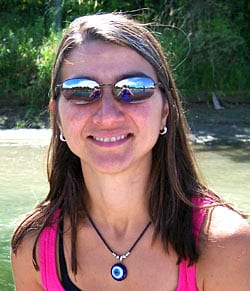2010 Chapman Lecture
Wave-driven Circulation in the Nearshore and Coastal Ocean
Tuba Ozkan-Haller
College of Oceanic and Atmospheric Sciences
Fall, 2010
Clark Building, Room 507
Reception to follow
Surface gravity waves propagating towards beaches shoal as they encounter shallower water, and they break in the surf zone. The surf zone region is therefore characterized by decreasing wave momentum with distance towards shore. Surf zone setup and alongshore currents (often referred to as "longshore" currents) are forced by the resulting forces. On alongshore-uniform beaches the resulting setup of the water surface and longshore current are also alongshore-uniform. On alongshore-variable bathymetry the setup displays alongshore non-uniformity, and associated alongshore pressure gradients also contribute to the alongshore momentum balance. Using simulations for several field sites, we find that cases associated with strong longshore currents often indicate a primary balance between the wave forcing and the friction term, with a secondary balance between the advective acceleration and the pressure gradient terms. In the remainder of the talk, this secondary balance is analyzed with the objective of highlighting the effect of the advective terms for conditions of strong longshore currents and weak alongshore variability in the wave forcing. A perturbation analysis is carried out and reveals that a nondimensional parameter (comprised of the length scales of the alongshore variability, the local water depth, longshore current strength and frictional parameter) controls the response of the longshore current to alongshore variability. The resulting simplified model suggests that the nonlinear response is a filtered version of the solution to the linear problem (when nonlinear advective terms are neglected), and the effect of the nonlinearity can be described as an attenuation and spatial shifting of the response to alongshore variability.

